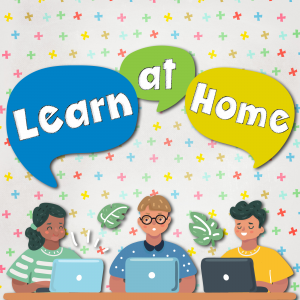
This post is part of a blog series: 9 Strategies for Successful Reading
If you haven’t read the beginning of the series, please read Strategy #1: Prepare, Strategy #2: Making Connections and Background Knowledge, and Strategy #3: Asking Questions.
Have you ever watched a movie or TV show with your kids and had them tell you at the end, “I knew that was going to happen!” Whether we’re watching a mystery whodunit or a thrilling epic fantasy, who doesn’t like to figure out what will happen before it is revealed? It makes watching or reading fun! But, did you know that this kind of thinking is also a very helpful strategy for reading comprehension? It’s called Prediction.
Strategy #4: Prediction
If you’ve read the previous blogs, you’ll know that one of the strategies is for your child to ask questions about the text. The next natural step is for them to answer their own questions and to make predictions about what will happen next.
Predicting starts from the time they read the title and see the cover of the book! If your child picks up a book called Sofia Martinez: My Fantastica Family, they might predict that the story will focus on family, and, from the smile on Sofia’s face, that the story will have a happy ending.
On the other hand, if your child picks up Scary Stories to Tell in the Dark, they will predict that the book will have many scary stories. They will expect scary things to happen. They might even predict they’ll be frightened if they read the stories.
Scary Stories to Tell in the Dark
Scary stories are a good example of how we predict. We do it all the time with scary stories, like predicting where the monster will turn up to scare us!
If your child reads about a character who is walking through a cemetery, they might predict an encounter with some kind of supernatural creature like a ghost, vampire, or ghoul. They might predict that a mist will come out of nowhere.
Predictions are also based on your child’s background knowledge. We covered that in the blog on Strategy #2: Making Connections/Background Knowledge. If your child has seen scary movies before, then they will know that ghosts, vampires, or ghouls often show up in stories that have cemeteries.
As you can see, the strategies all work together to help comprehension. Asking questions, relating what they are reading to what they already know, and predicting what will happen next, all combine to become powerful strategies to propel your child’s reading forward. When kids are engaged in what they are reading, they remember it and they understand it.
Plus, once your child gets the hang of predicting and starts making predictions that are correct, it boosts their confidence in reading!
 About this blog series
About this blog series
We’ll go over 9 strategies in this series of blog posts. Your child might not need all nine. One might work magic! If you are a good reader and haven’t ever thought about how you read, you might be surprised to discover you use some or all of these strategies.
And again, a reminder that good readers are not smarter than readers who struggle. Not at all! Many highly intelligent and successful people have struggled with reading, and they became good readers. What they do, and what all good readers do, is develop habits and strategies that help them comprehend what they are reading and give them skills for when they get stuck.
Next up: Strategy #5: Drawing Inferences
Visit Learn at Home for even more great resources, including:
- Free online tutoring
- Online tools available 24x7x365
- Recommended items from our collection that you can pick up curbside

